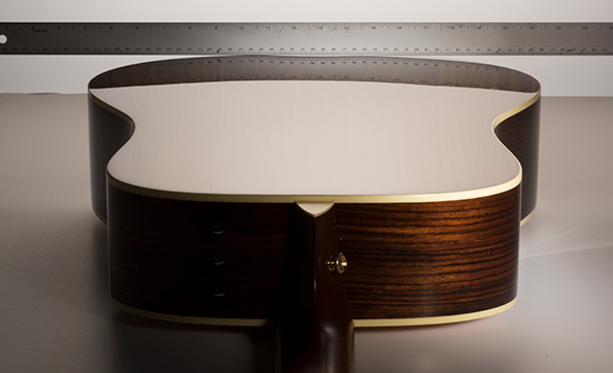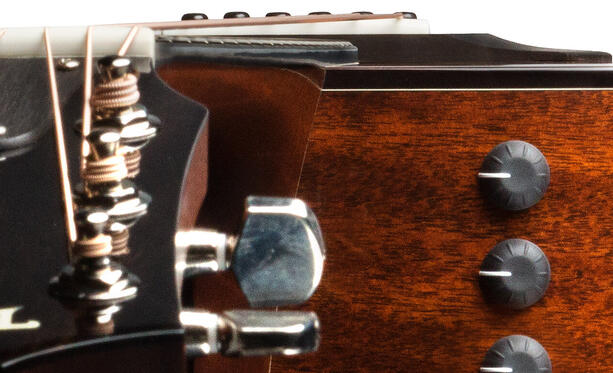My shopping cart
Your cart is currently empty.
Continue ShoppingThe ideal humidity range for your guitar is 45-55% relative humidity (RH). Extended exposure to high humidity can lead to guitar damage. Here’s what to look for and how to prevent it.
While much of our energy is devoted to preventing guitars from drying out, it also is possible for guitars to become too wet. Usually, a guitar becomes over-humidified when it has been exposed to the elements for a period of several weeks in an area where the humidity is very high (80-90%), or for several months where the humidity is medium-high (60-70%). In some cases, guitar bodies are over-humidified by well-meaning owners who, in an effort to prevent their guitars from drying, have gotten carried away with soundhole humidifiers.
While high humidity usually will not crack the wood the way low humidity can, the adverse effects can be just as damaging and sometimes can be more costly to repair. The wood in a guitar can swell tremendously, causing glue joints to fail, finish to lift, and neck angles to go bad. Distortions in the wood can remain even after other damage has been repaired, leaving the guitar cosmetically disfigured. Guitars that are too “wet” can sound dull and lifeless from the extra water weight the wood is holding.
We regularly see customers who live in wet regions and are unaware that the moisture is directly affecting their guitar switch to extra light gauge strings when their swollen guitars become difficult to play. They end up with high action on a dull sounding guitar, with strings too light to get the full, rich tone the guitar normally produces, when a little humidity control would have kept the guitar playing and sounding great. To learn more on this topic, read our Tech Sheets, “Symptoms of a Dry Guitar,” and “Using a Guitar Humidifier,” and you’ll gain an understanding of our wood-drying process, the climate control of our factory, and how relative humidity affects wood.
We do not expect guitar owners to become meteorologists, or to walk on eggshells concerning the safety of their guitars. But by becoming familiar both with the principles of humidity and with how a normal guitar looks and feels, an owner can prevent almost all damage to a guitar and maintain the guitar’s great playability and tone. Basic precautions include: keeping the guitar in its case when not in use; keeping it out of direct sunlight and extremes of heat, cold and high or low humidity; and regularly checking for any significant changes.
1. High action. Strings that are unusually high off the fretboard, making it difficult to play.
2. The guitar sounds dull and lifeless.
3. Unusual warp on the back at the end block.

4. Improper neck angle. Sighting the neck to the bridge, the frets will appear to hit below the bridge.
NOTE: All guitars will have a certain amount of “bellying” behind the bridge. This alone is not an indication of a wet guitar. Look for a combination of these symptoms to determine if the guitar is getting too humid.


The Taylor 100 Series, 200 Series, Academy Series, Baby Taylor, Big Baby and GS Mini models feature a layered wood back and sides with an arched back. The arch is by design and allows us to add depth and strength to the guitar body without bracing the back. Don’t be alarmed by the sight of the pronounced back arch on these models as this is completely normal.
Reproduced entirely from: https://www.taylorguitars.com/support/maintenance/symptoms-wet-guitar